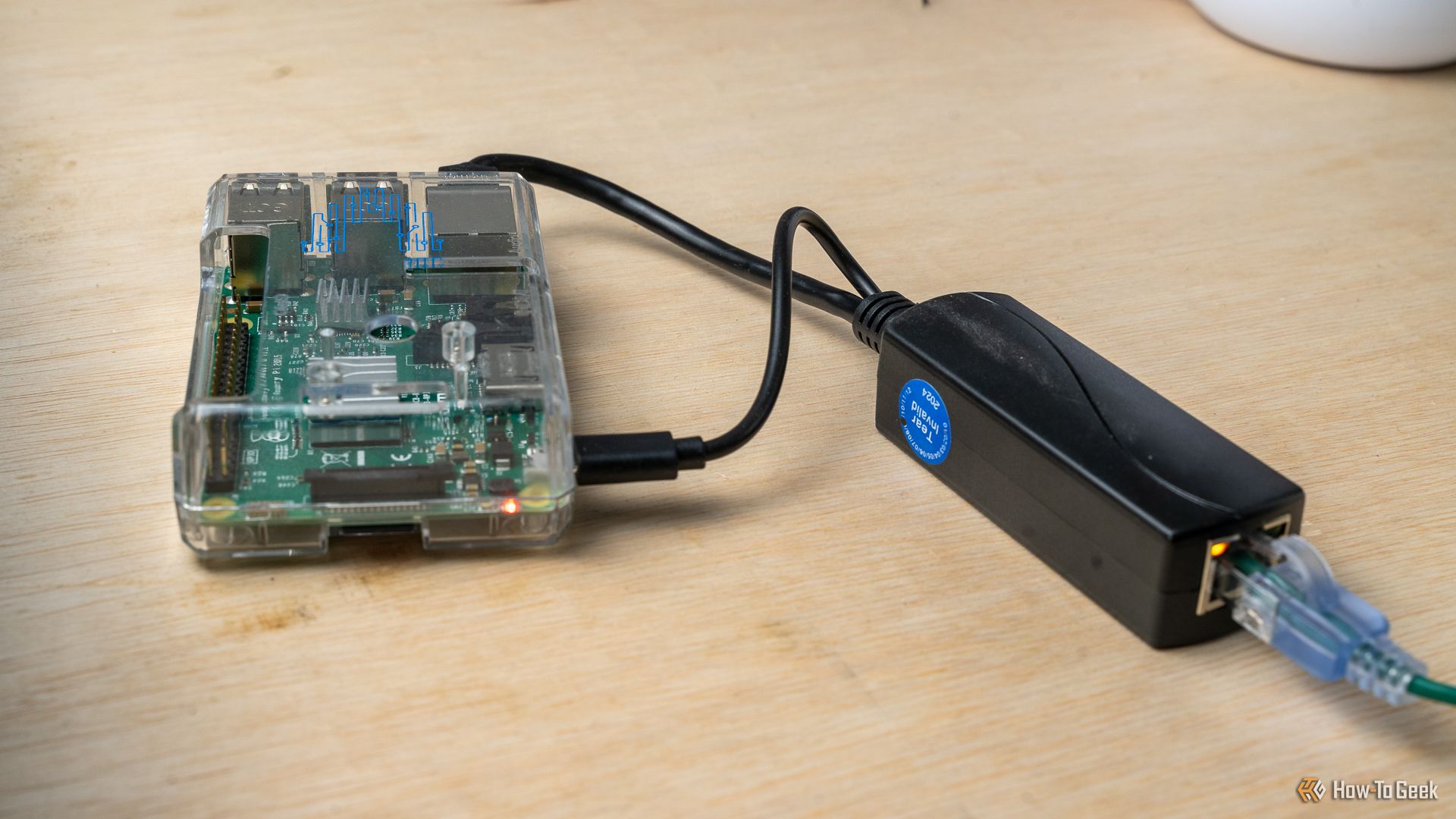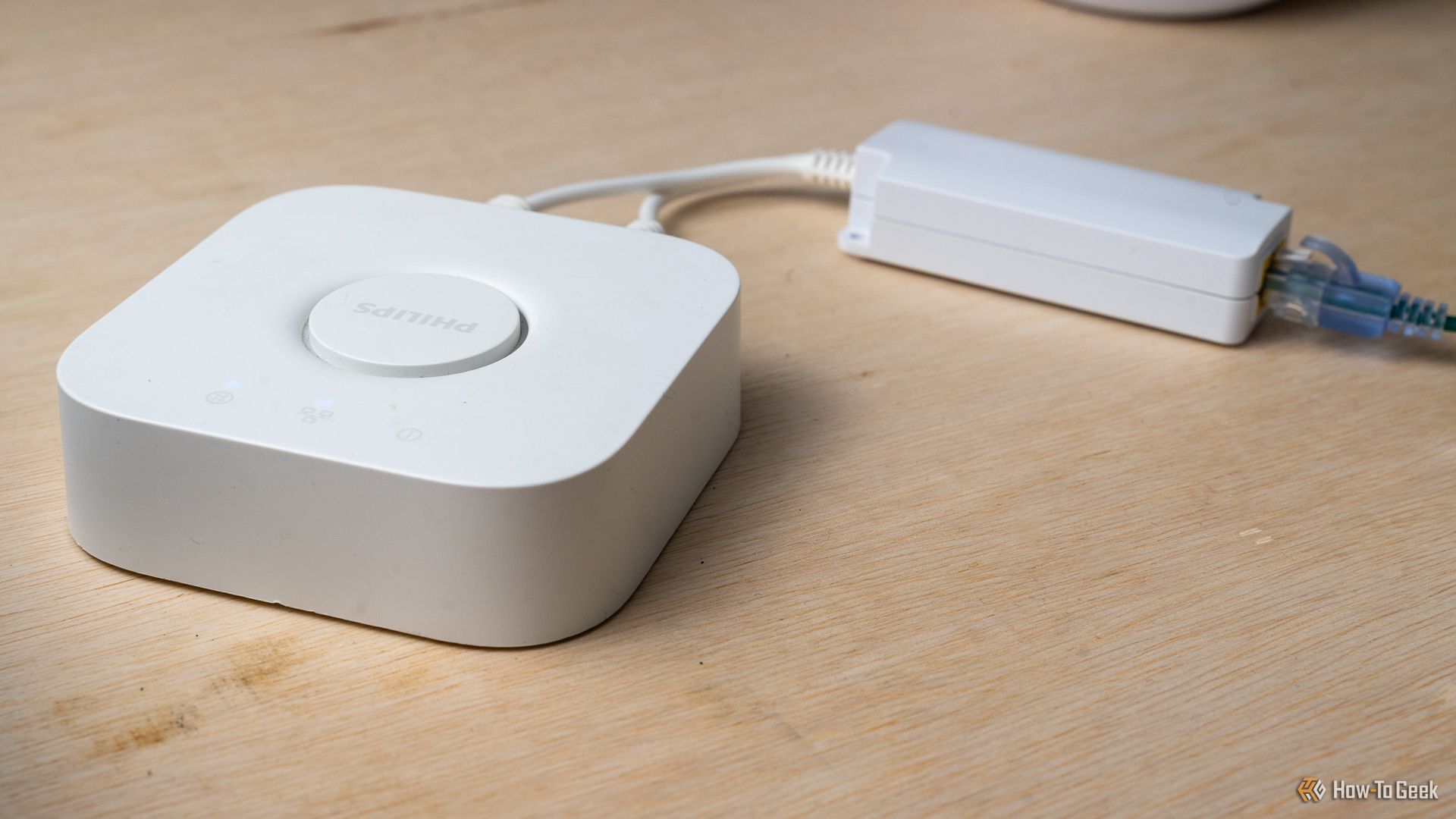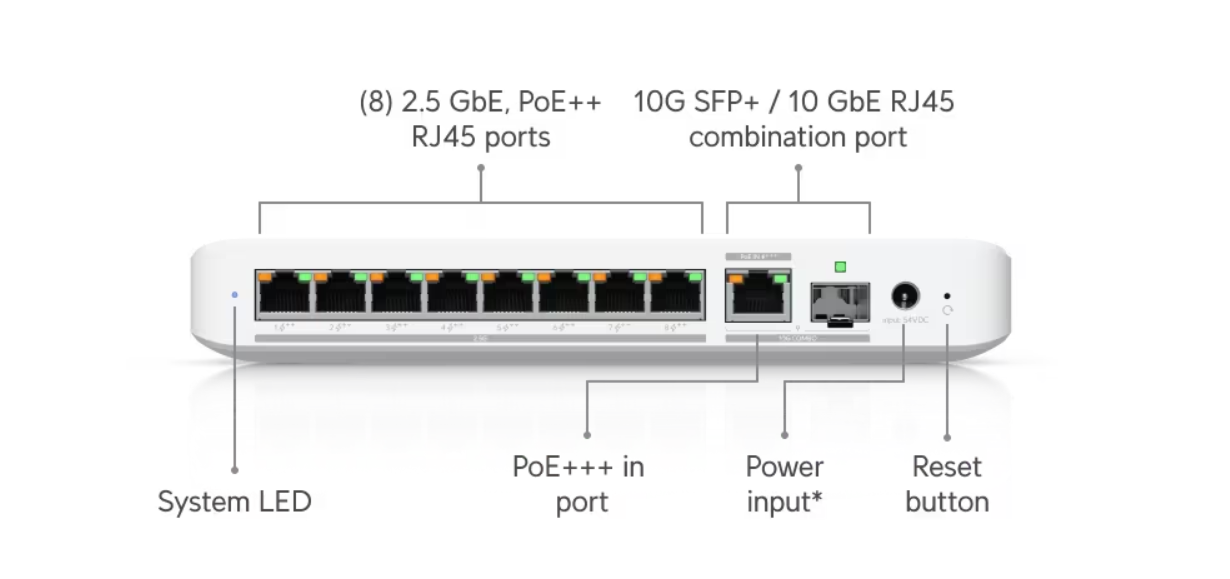Summary
- Power over Ethernet (PoE) can power more than cameras and APs, providing flexibility for various devices.
- PoE splitters enable running devices like Raspberry Pi and Hue Hub without official PoE support.
- Different PoE standards offer varying power outputs, accommodating devices from smart home hubs to high-power systems.
While Power over Ethernet (PoE) is nothing new to home networking, I recently found some unique ways to use PoE in my smart home. Utilizing some simple PoE splitters, I’m easily able to run both my Hue Hub V2 and Raspberry Pi 3B using my network. Here’s how I do it.
More Than Just Cameras and Access Points
When I first got my PoE switch, I thought, like many others, that it would be great for running things like access points, switches, and cameras. However, PoE can be used in so many other cases too.
Power over Ethernet is just that: pure power sent over an Ethernet wire. What you do with that power is completely up to you.
Finding PoE splitters is what changed the game for me. Essentially, these devices take a PoE input and split it out into separate power and Ethernet. This power can be delivered however you want. Barrel connector, Micro USB, USB-C, or any other DC output is available, all depending on the PoE splitter that you buy.
How I Powered My Old Raspberry Pi Without a PoE Hat
While my main Pi-Hole instance runs on my dedicated server, I also have an older Raspberry Pi 3B that I use as my backup server. As it’s just a 3B, and not a 3B+, there’s no official PoE hat available for the Pi.
However, that doesn’t stop me from using Power over Ethernet to run the Pi. I simply picked up a PoE splitter that sends Ethernet and 5V, 2.4A Micro USB power out separately. The Pi needs a 5/5.1V, 2.5A power supply, making the splitter perfect.
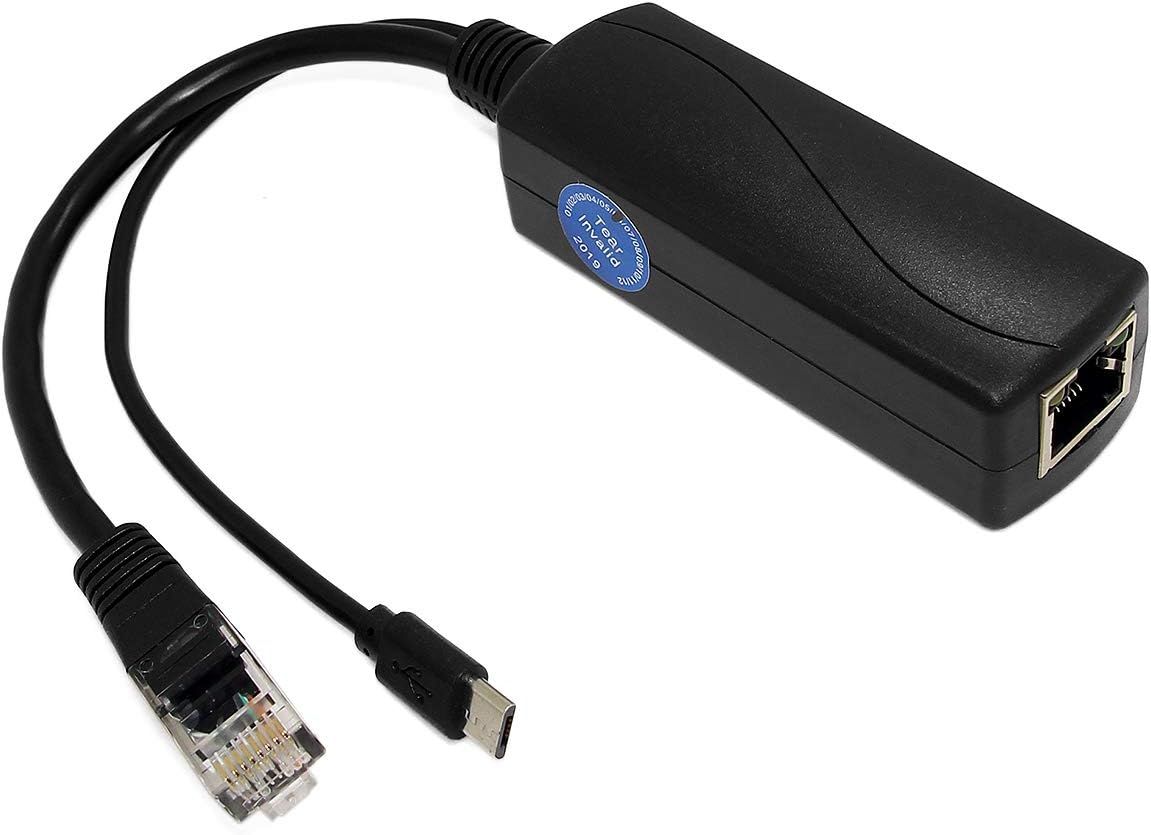
PoE Splitter for Raspberry Pi 3B
This PoE splitter is ideal for powering your Raspberry Pi without a PoE hat. It works with all Raspberry Pi’s that use Micro USB and outputs 5V at 2.4A. Plugging directly into the Raspberry Pi’s Ethernet port, you’ll be able to plug the Micro USB plug into the Pi’s power port and get rid of the dedicated power adapter that goes to the wall.
I just send an Ethernet cable out of my PoE switch to the splitter, then plug in Ethernet and power to the Pi, and it’s been working rock solid ever since I installed it (which was about a month ago). Zero issues, and, according to my switch, it’s only drawing around 2W of power.
I Also Powered My Hue Hub V2 Using PoE
Once I figured out how I was going to power my Raspberry Pi with PoE, I turned my attention to other devices in my smart home setup that could benefit from cutting the cord from the wall. The next obvious choice was smart home hubs.
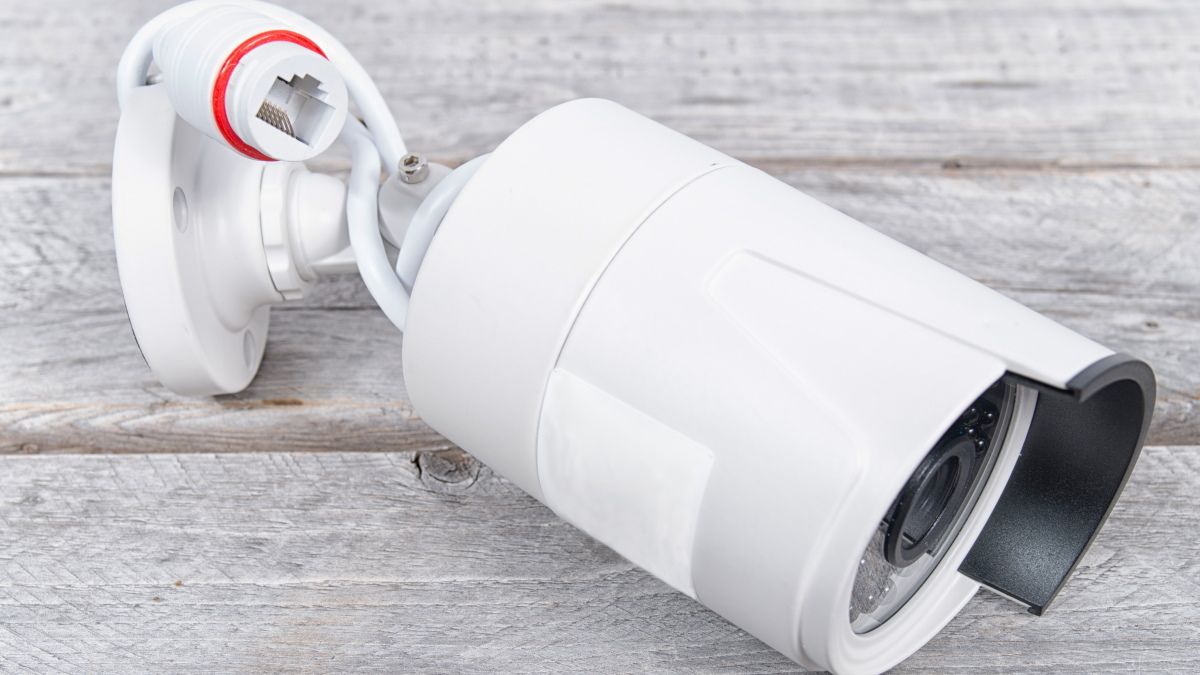
Related
What Is Power over Ethernet (PoE)?
Did you know that you can power certain devices using only an Ethernet cable and the right network equipment?
The Philips Hue Hub V2 is pretty simple to power. It needs 5V at 2.5A, similar to the Raspberry Pi. However, instead of Micro USB, it needs a 5.5×2.5mm barrel plug, which is exactly what this PoE splitter that I found offers.
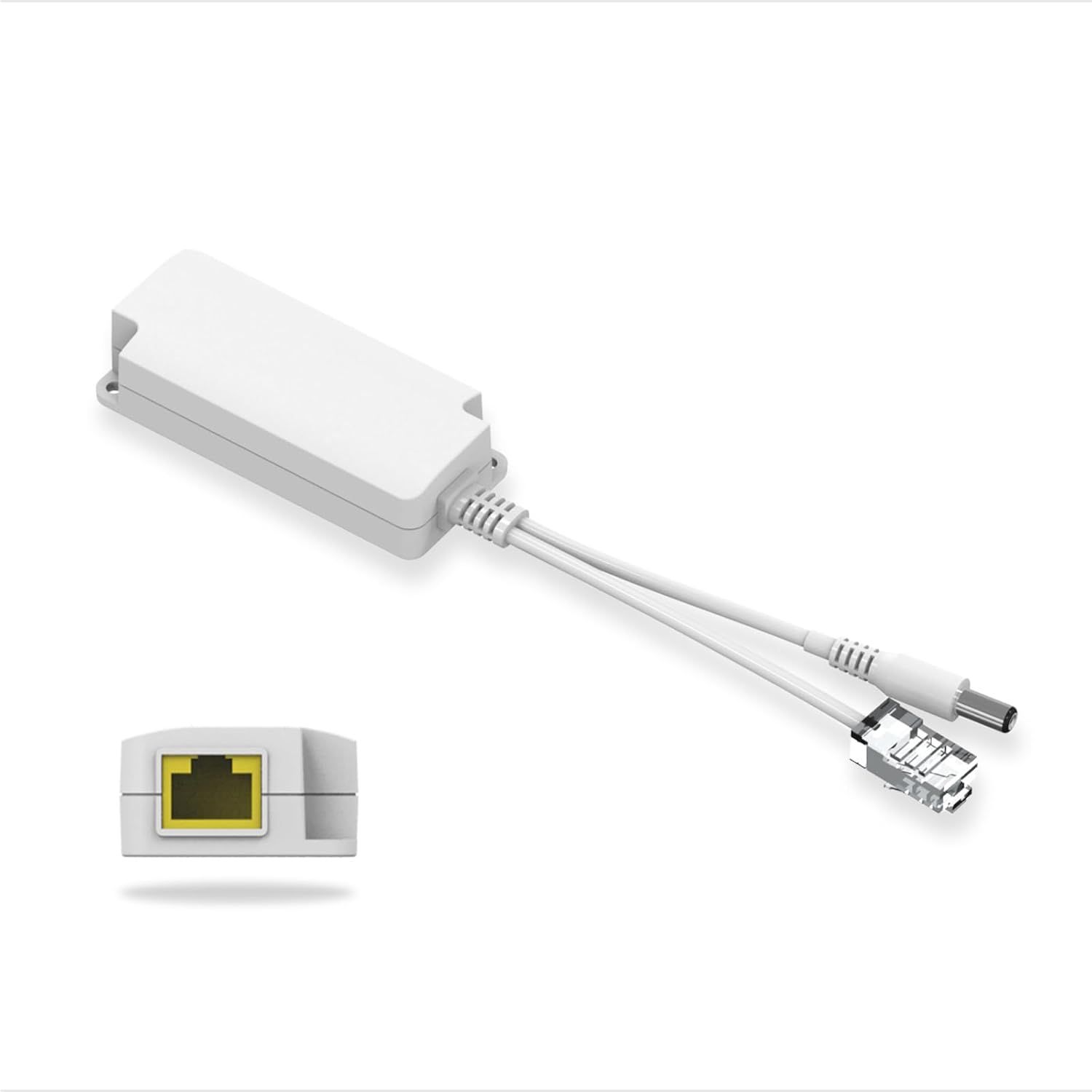
PoE Splitter for Hue Hub
This PoE splitter is perfect for powering your Hue Hub. It outputs 5V at 2.5A, which is what the Hue Hub V2 requires to work. It also has the 5.5×2.5mm barrel plug on it already so you don’t have to adapt the plug, and it’s able to hook right into the Hue Hub V2 to start powering it right away.
Many posts that you find talking about powering a Hue Hub V2 over PoE require adapters, and it can get pricey going that route. This PoE splitter, however, has the correct barrel plug on it already and has worked flawlessly for me.
Just like the Pi 3B above, I run an Ethernet cable to the splitter and then plug the built-in Ethernet cable and power plug right into the Hue Hub V2, where it’s drawing around 2W. It has also been rock solid and reliable for me since putting it in service, and my mind is now spinning on what else in my stack I can run with Power over Ethernet.
Working Out How Much Power You Need
When it comes to PoE, there are quite a few standards to choose from. Both the Hue Hub and Pi could run off traditional PoE (802.3af), which outputs up to 15.4W, with around 13W of that being usable. This is enough to run most entry-level to mid-range Wi-Fi access points, many cameras, and, obviously, smart home gear.
Stepping up from PoE, you have PoE+ (802.3at), which outputs 30W max, but is effectively 25.5W of usable power. This is ideal for things like higher-powered access points with more radios, or systems like the Raspberry Pi 5, which can draw a bit more power than the Pi 3B I have in my setup. I also use PoE+ to power my 2.5G switch over Ethernet, which is quite convenient to now have to use a separate wall outlet to run.
After PoE+, we have PoE++ (PoE++ Type 3), which can support up to 60W, with a 51W effective output. Stepping up to this amount of power starts to get expensive, but it can be extremely useful when needed. I’ve seen people use PoE++ splitters with USB-C outputs to charge iPads or Android tablets when used as a wall display, for instance. Of course, anything else that draws less than 51W would run just fine too.
The highest standard right now, which is PoE+++ (802.3bt Type 4). With the ability to output a theoretical max of 100W, or 71W effective, this amount of power will let you drive quite a few machines. This standard is used to power devices that could send power out themselves. For example, the Unifi Flex 2.5G PoE switch has eight PoE++ outputs and can be powered by a PoE+++ input. If you send the Flex 2.5G PoE PoE+++, then it’ll have 76W of PoE++ availability across its eight ports. With a standard 120V wall plug, that goes up to 196W if you need it.
I’ve seen people hack together methods of powering an Unifi NAS system over PoE. Not a small portion of the NAS, but the entire system, populated with seven 2TB SSDs. This setup requires hackery of the highest level and is not for the faint of heart. The fact that it’s possible is simply amazing, though.
Really, the amount of PoE power you need depends entirely on what you’re trying to drive. Most devices will give you the PoE standard that’s required upfront, so be sure to check that out.
As a rule of thumb, most lower-powered devices (smart home hubs, standard access points, simple gigabit switches, cameras, and the like) can run off PoE. Stepping up to higher-powered access points or 2.5G switches will often require going to PoE+.
PoE++ and beyond is really designed for high-power situations, like running larger switches or actual devices like an iPad or MacBook, instead of just accessories.


